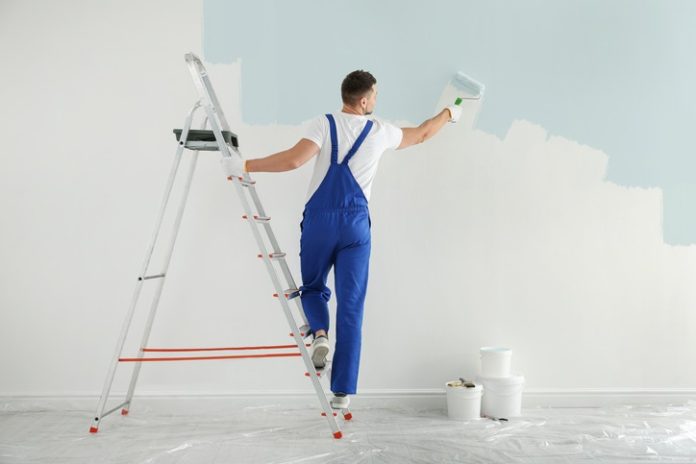When we decide to paint our homes, we’re not just adding a layer of color; we’re investing in our property’s future. Understanding the complex relationship between paint, application techniques, and environmental factors is key to ensuring this investment lasts as long as possible.
This guide is designed to unravel the mysteries of paint longevity, offering insights into how different types of paint perform over time, the impact of preparatory work, and the effects of indoor and outdoor conditions.
With this knowledge, homeowners can make informed decisions to ensure their home renovation painting projects stand the test of time.
Factors Affecting Paint Lifespan
There are several key factors that can impact the lifespan of home renovation painting projects. These include:
Type of Paint
The type of paint used is a crucial factor in determining how long it will last. Different paints have different durability and resistance to weathering, stains, and fading. For example, oil-based paints are more durable than water-based paints, while acrylic paints are known for their fade-resistant properties.
Different Types of Paint
- Oil-Based Paints: Known for their durability and glossy finish. It’s ideal for high-moisture areas but requires more time to dry.
- Water-Based Paints: Easier to clean and quick drying. They offer good durability and less environmental impact than oil-based options.
- Acrylic Paints: Excel in fade resistance and are highly durable against weathering. They are versatile and can be used for both interior and exterior projects.
- Latex Paints: Popular for their ease of application and cleanup. They provide good coverage and a wide variety of finishes.
- Enamel Paints: Offer a hard, durable finish, making them suitable for trim, cabinets, and other areas that see a lot of wear.
Application Techniques
Proper application techniques and tools can greatly affect the lifespan of paint. Depending on the painted surface, different methods may be required for maximum adhesion and durability. For instance, using a primer before painting can help improve adhesion and extend the life of the paint.
Surface Preparation
One of the most crucial steps in any painting project is surface preparation. Properly cleaning, sanding, and repairing any damages or imperfections on the surface can greatly impact the longevity of the paint. A well-prepared surface allows for better adhesion and helps prevent premature peeling or cracking.
Environmental Factors
Indoor and outdoor environmental factors can also play a significant role in the lifespan of home renovation painting. Factors such as exposure to sunlight, moisture, temperature fluctuations, and pollutants can all contribute to paint deterioration over time.
Prolonging Paint Lifespan
Understanding these factors can help homeowners make informed decisions to prolong the lifespan of their home’s paint. Here are some tips to help extend the life of your home renovation painting:
- Choose high-quality, durable paint suitable for the specific surface and location.
- Use proper application techniques and tools to ensure maximum adhesion and durability.
- Thoroughly prepare the surface before painting by cleaning, sanding, and repairing imperfections.
- Consider adding a protective coating or sealant for exterior surfaces exposed to harsh weather conditions.
- Regularly maintain and touch up painted surfaces, especially in high-traffic areas or areas exposed to moisture.
Additional Factors to Consider
- Color Selection: Choosing lighter shades can significantly affect the paint’s lifespan, as dark colors tend to absorb more UV and may fade more quickly. Lighter colors reflect sunlight, reducing the temperature of the surface and potentially extending the life of the paint.
- Quality of Paint: Investing in high-quality paint brands can enhance durability and longevity. High-quality paints often contain better pigments and binders, contributing to their ability to withstand environmental factors and maintain their appearance over time.
- Climate Considerations: The local climate plays a substantial role in paint longevity. Humid climates can lead to moisture damage and mold growth, while areas with extreme temperature fluctuations can cause the paint to expand and contract, leading to cracking and peeling.
- Maintenance Practices: Regular maintenance, such as cleaning and touching up minor damages, can prevent larger issues and extend the paint’s lifespan. It’s important to address any issues promptly to avoid compromising the paint’s effectiveness.
- Paint Finish: The finish of the paint, whether matte, semi-gloss, or glossy, can also impact its longevity. Higher gloss finishes are more durable and easier to clean, making them better suited for areas exposed to high wear or moisture.
When Should You Paint Again?
There is no exact timeframe for repainting, as it depends on factors such as the type of paint used, environmental conditions, and maintenance practices. However, a good rule of thumb is to repaint interior surfaces every 5-10 years and exterior surfaces every 7-10 years. Click here to learn more about this topic.
By understanding these factors and implementing proper maintenance practices, homeowners can ensure that their home renovation painting projects last for years.
Conclusion
The longevity of a home renovation painting project is affected by various factors, such as the type of paint used, application techniques, surface preparation, and environmental conditions.
To prolong the lifespan of your paint, it’s essential to choose high-quality paint suited for the specific location and surface, use proper application techniques, thoroughly prepare the surface, and regularly maintain painted surfaces.
By considering additional factors such as color selection, climate, and paint finish, homeowners can make informed decisions to ensure their home’s paint lasts for years.





















